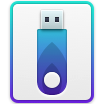USB flash drives are often formatted more frequently than other types of storage devices because they’re typically used for transferring and storing temporary data. As a result, the risk of accidentally deleting or losing important files increases significantly.
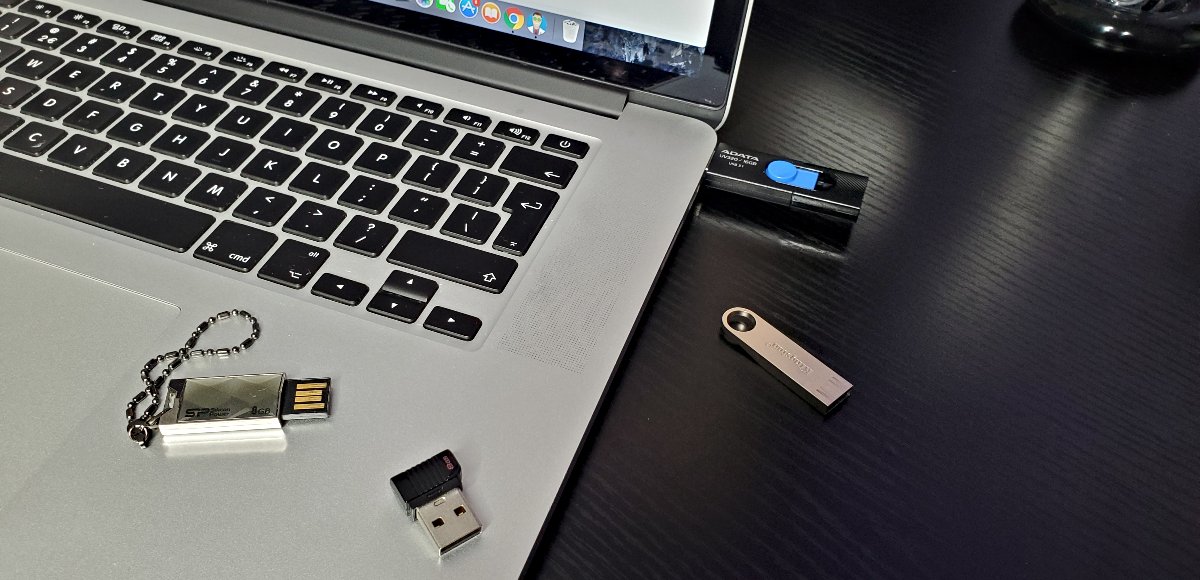
Fortunately, learning how to recover files from a formatted USB drive is not just possible—it’s easy! In this article, we briefly explain what happens when you format a USB drive and equip you with the skills and tools needed to recover your lost data effectively.
Formatted Drive: What Happened to My USB Drive?
When you format a USB drive, you’re essentially resetting its file system, making the storage space available for new data. However, the impact on your data depends on the type of format performed:
- Quick format: this is like removing the index from a book. It deletes the file system’s index or allocation tables, which are maps telling your operating system where files are stored on the drive. After a Quick format, while the system sees the drive as “empty” because the indexes are gone, the actual data (the pages of the book) remains intact on the drive. Data stored on a USB flash drive that has been formatted using the Quick format method can be recovered.
- Full format: On the other hand, a Full format goes several steps further. It not only removes the index but also goes through each “page” of the drive, erasing or overwriting the data. This is equivalent to tearing out all the pages of the book, leaving you with blank pages. In some cases, a full format may also check the drive for bad sectors. Unfortunately, Full format (and Secure format) methods make data recovery impossible unless you have a backup to recover from.
How to Recover Files from a Formatted USB Drive
In this section, we’ll guide you through the steps to recover files from a formatted USB drive, using reliable recovery software and tried-and-tested techniques. Let’s get started!
Solution 1: Data Recovery Software
Data recovery software applications can retrieve lost data even from a formatted USB drive by accessing the drive at a low level and scanning it for remnants of deleted files.
We’ll use the Disk Drill USB recovery tool because it offers several significant benefits:
- Runs on Windows and macOS: You can use Disk Drill to recover data from a formatted USB flash drive on Windows (any Windows XP system or newer) and macOS (macOS 10.15 “Catalina” and newer, including the latest macOS 14 “Sonoma”).
- USB flash drive compatibility: Disk Drill can recover data from all commonly used USB flash drive file systems (FAT16/FAT32/exFAT, NTFS, NTFS5, EXT2/EXT3/EXT4, BTRFS), and it can also handle RAW flash drives that don’t have any file system. The macOS version additionally supports APFS and HFS/HFS+.
- Organized scan results: The software categorizes scan results into Deleted, Existing, and Reconstructed files, with advanced filters for easier searching
- Extensive RAW file support: The tool is highly effective in detecting a wide range of RAW photo and video formats. The total number of supported file formats is around 400.
- Free data recovery: Although Disk Drill is a premium solution, you will be able to recover up to 100 MB of data for free. Considering that flash drives usually store small files such as documents, photos, and music, you will be able to recover a large number of files before deciding whether you want to upgrade to a Pro license.
Here’s how to recover data from a formatted USB flash drive:
- Download and install Disk Drill on your Windows or Mac computer.
- Connect the formatted USB drive to your computer and launch Disk Drill. You can then select your USB drive from the list of storage devices and click the Search for lost data button.
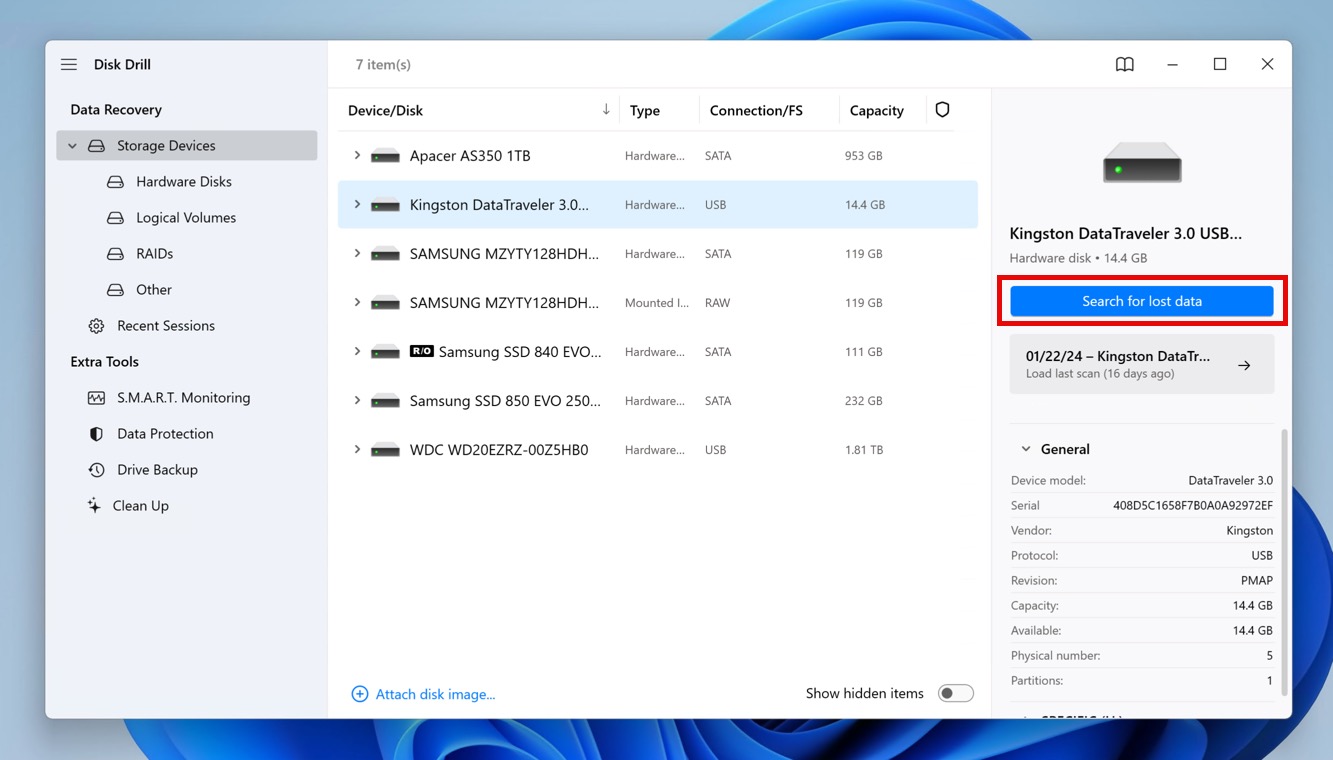
- Allow Disk Drill to run and complete the scan. Depending on how large your flash drive is (and how much data is/was on it), this scan could take some time. The good news is that you can pause and resume the scan at any moment, and you can also review found items and let the scan continue in the background.
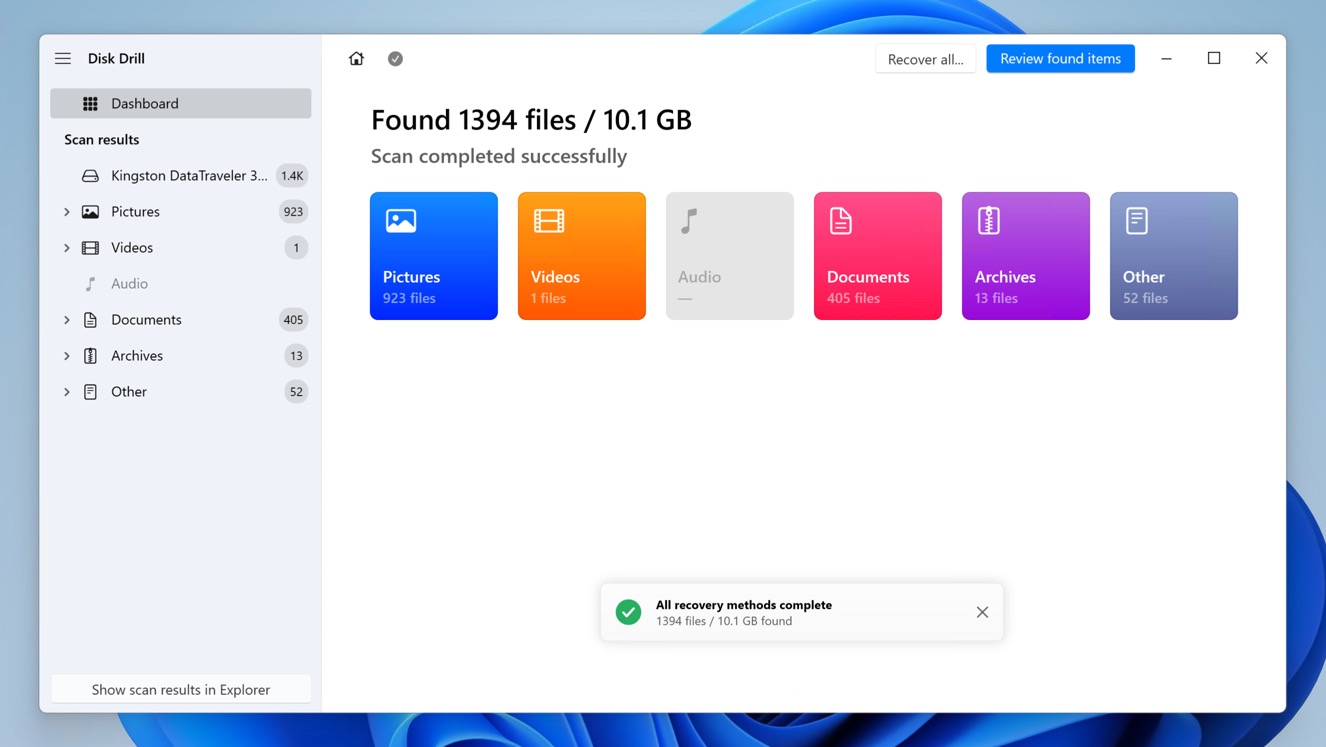
- You now need to analyze the scan results and add each file you want to recover to your recovery Queue by clicking the checkbox next to it. We recommend you take advantage of Disk Drill’s scan result filters to quickly find what you’re looking for. You should also preview files to check their integrity and content.
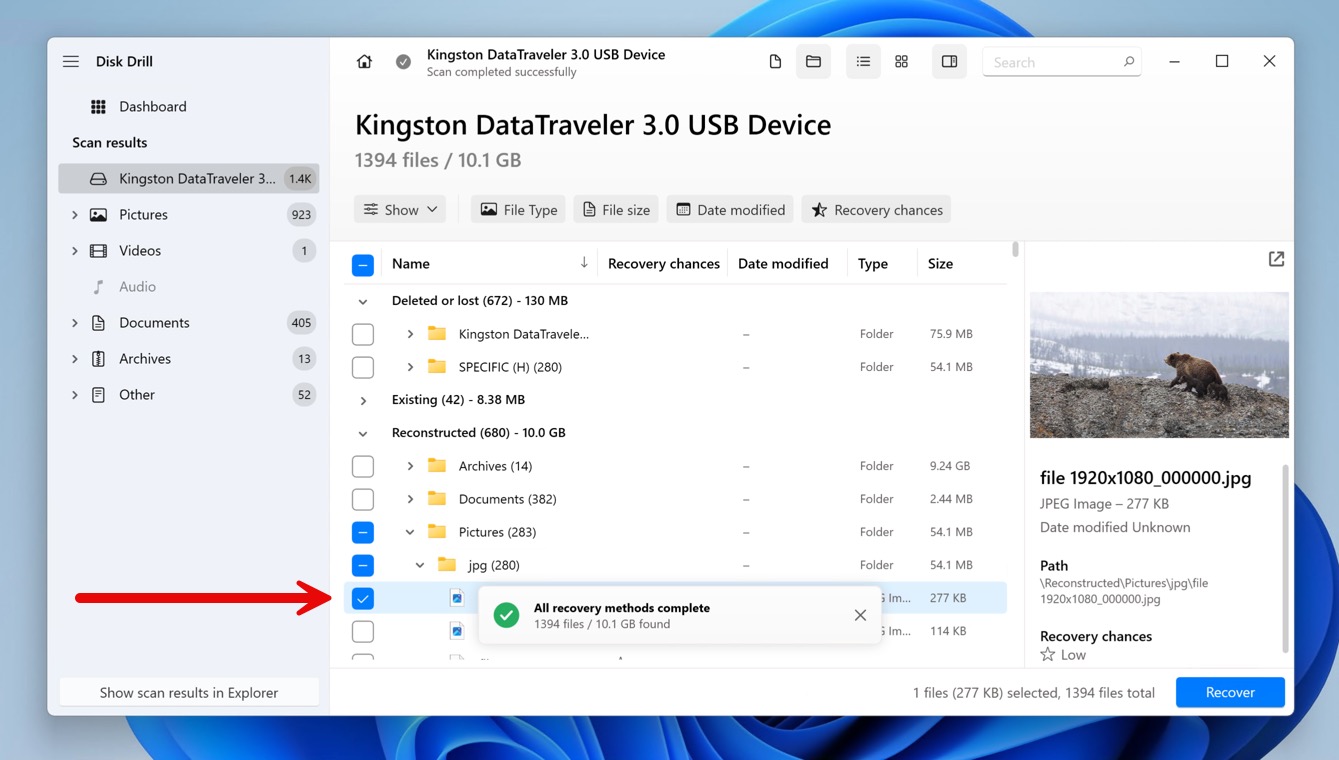
- After you’ve selected the files to be recovered, click Recover and (when prompted) select a location to store the recovered files. Make sure not to select a destination that’s on the same drive you’re recovering from. Click Next, and Disk Drill will recover the files from your formatted USB flash drive to your selected location.
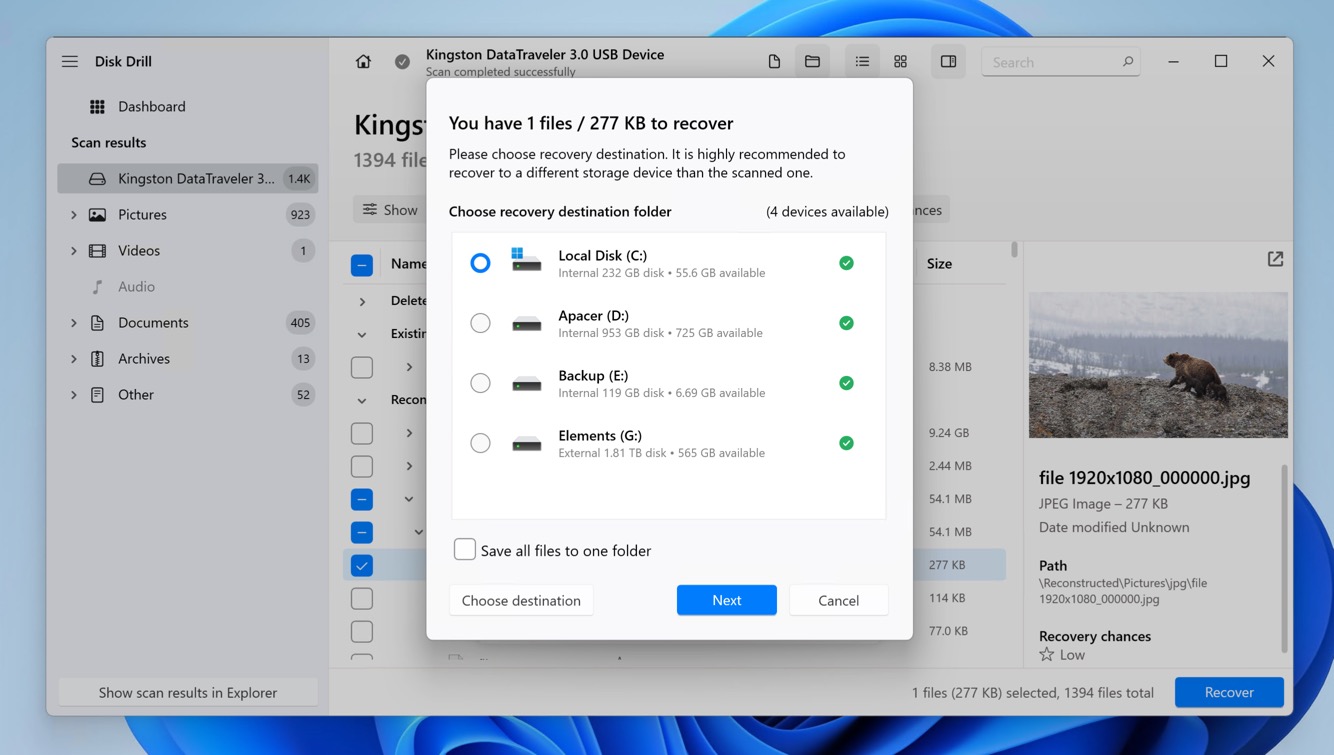
Solution 2: Command Prompt (CMD)
 The Command Prompt (CMD) in Windows offers several data recovery options, each helpful in its own way. To launch CMD, all you need to do is press the Win key, type “cmd,” and launch the Command Prompt tool as administrator.
The Command Prompt (CMD) in Windows offers several data recovery options, each helpful in its own way. To launch CMD, all you need to do is press the Win key, type “cmd,” and launch the Command Prompt tool as administrator.
Reveal hidden files using the ATTRIB command
Does your USB flash drive seem to be formatted even though you don’t remember formatting it? The chances are that it’s actually not formatted at all. It’s possible that all files have had their attributes modified (such as by malware), becoming hidden from view. The good news is that a single CMD command can reveal them:
attrib -h -r -s /s /d I:\*.* (replace I with the letter assigned to your USB flash drive)
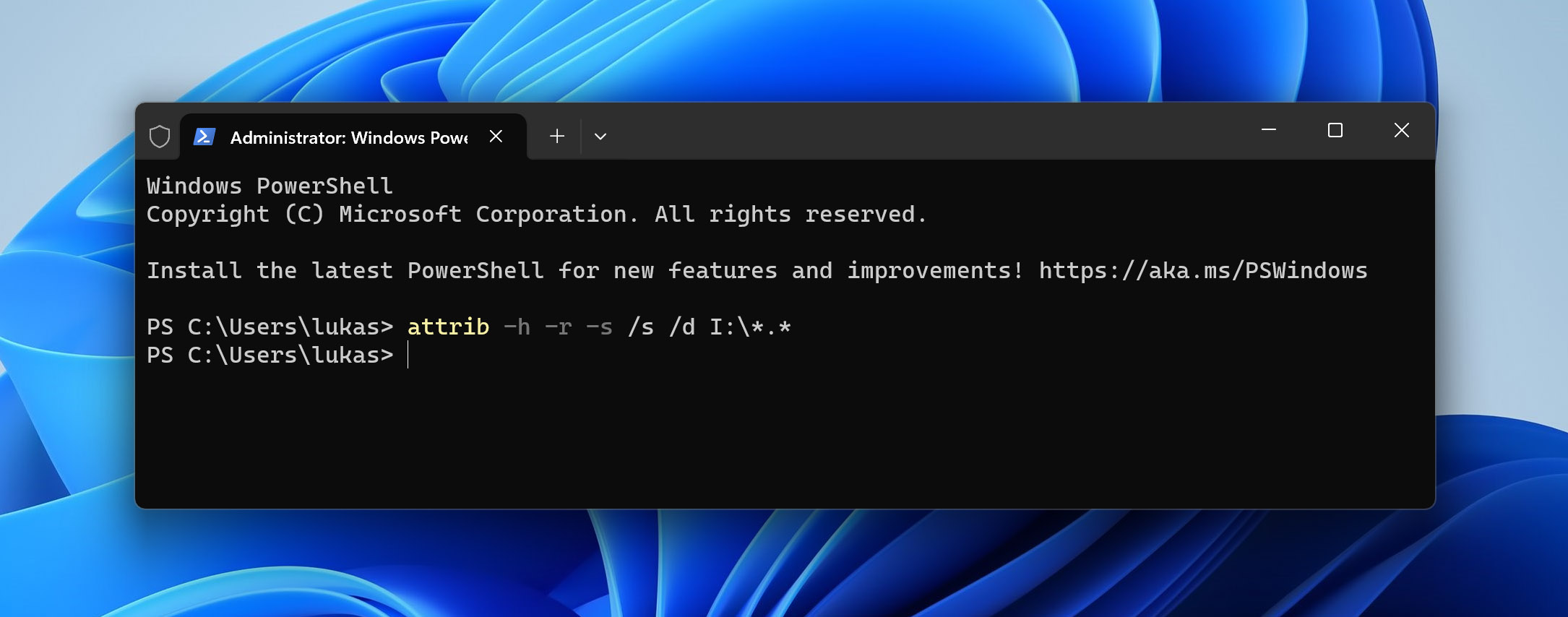
Repair USB flash drive using CHKDSK
Corrupted USB flash drives sometimes seem to be formatted because no files stored on them can be accessed. Luckily for you, you can repair any USB flash drive using the CHKDSK tool, which can be invoked with a simple command:
chkdsk I: /r (replace I with the letter assigned to your USB flash drive)
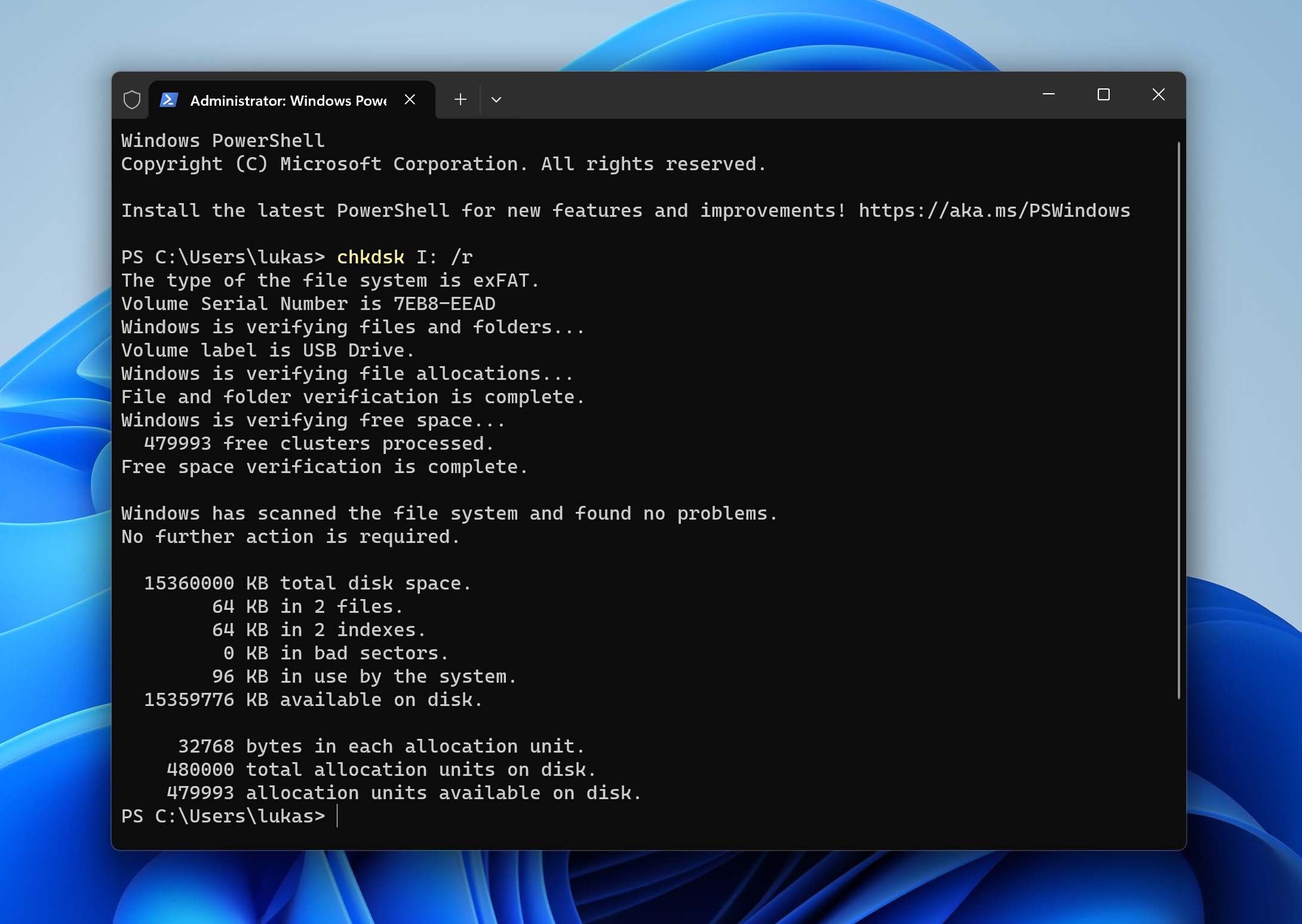
Solution 3: Professional Data Recovery Service

DIY data recovery solutions have many advantages (they’re convenient, affordable, and quick), but sometimes it’s best to hire professionals with sophisticated equipment and plenty of experience. Here are some examples of when spending money on professional data recovery to recover files from a formatted USB flash drive makes sense:
- The USB flash drive has been physically damaged and can’t be recognized by your computer anymore.
- If the formatting issue is accompanied by hardware problems (e.g., the USB drive is not recognized by the computer, makes unusual noises, or has damaged components), data recovery software will not be effective. Professional services have the tools and cleanroom environments to safely address hardware issues.
- Extremely important files were stored on the formatted USB flash drive, and losing them would be far more expensive than hiring a professional data recovery center.
The good news is that the best professional data recovery centers offer a free evaluation, so you don’t have to worry about ending up wasting your money without getting your data back. Here’s how data recovery centers work:
- To get started, you first need to pick a data recovery center with a high success rate and initiate a work order.
- The next step is even more important: preparing your USB flash drive for shipping. We recommend you place it in an anti-static bag and use a generous amount of bubble wrap to protect it.
- After shipping the package, you then need to wait for an expert estimate. The recovery process itself will begin only after your approval of the quote.
If everything goes right, you will promptly receive all recovered data on a new USB flash drive or some other storage device—it all depends on your agreement with the data recovery center.
What Is the “USB Drive Not Formatted” Error?
In order for your computer to be able to read data from your USB drive, the drive must be formatted with a file system supported by your operating system. For example:
- ️Windows is compatible with FAT, FAT32, exFAT, NTFS, and Microsoft’s new ReFS.
- MacOS can read and write to HFS+, APFS, exFAT, and FAT32, but it can only read NTFS.
- Linux (the kernel) supports many different file systems, with the most commonly used ones being the Ext family, XFS, Btrfs, and the FAT family.
When your USB drive doesn’t have any file system, is formatted with a file system that is not compatible with the operating system you are using, or if the file system on the USB drive becomes corrupted, you may encounter the “USB Drive Not Formatted” error. This error message is the computer’s way of telling you that it cannot recognize the format of the drive, and therefore, cannot read the data stored on it.
It’s important to understand that while the error indicates a problem with accessing the data, the files themselves are usually still on the drive. They remain inaccessible only because the system cannot navigate the drive’s file structure.
How to Solve The “USB Drive not Formatted” Error?
When you do plug in a USB drive and the USB Drive not Formatted error appears, what do you do? If you’re certain you’ve used that drive before (and it contains data), do not click Format disk.
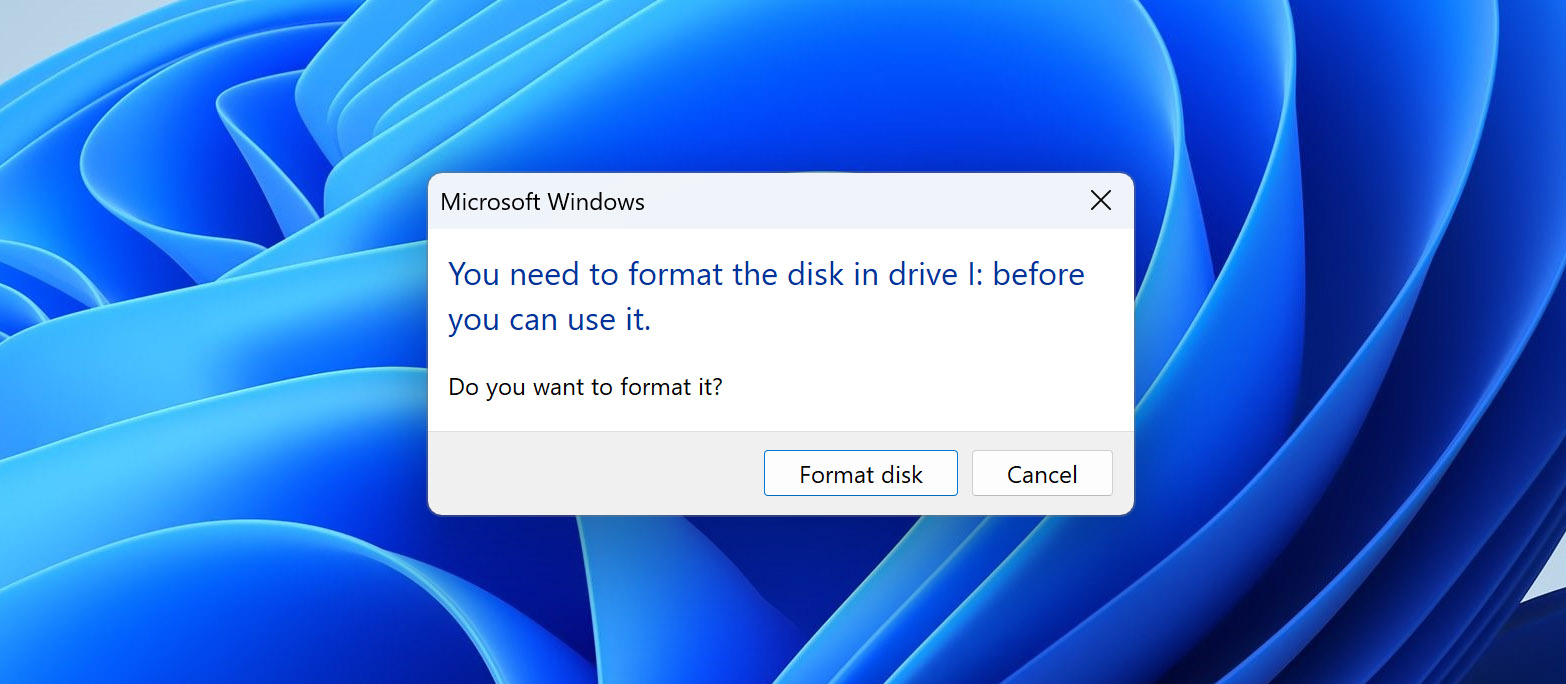
Instead, you can try the following two solutions:
1. Try a Different Operating System
Sometimes, the issue stems from the specific file system compatibility of your operating system. If your current OS cannot read the file system of the USB drive, it might prompt the “USB Drive not Formatted” error. In such cases, connecting the USB drive to a computer running a different operating system (Windows, macOS, or Linux) might resolve the issue.
Keep in mind that each operating system has its own set of file systems it can read and write to, as explained in the section above. If the other OS recognizes the drive’s file system, you can then proceed to copy your data to a safe location.
2. Use Disk Drill for Data Recovery
Disk Drill can recover data even from RAW drives because it recognizes files based on their signatures, rather than relying solely on file system metadata, making it an excellent solution for solving the “USB Drive not Formatted” error.
For instructions on using Disk Drill, please refer to the “How to Recover Files From a Formatted USB Drive” of this article.
Conclusion
Recovering data from a formatted USB drive isn’t nearly as challenging as you thought. And with the help of data recovery tools, even the question “How do I recover files from a formatted flash drive?” won’t fill you with dread. So the next time those pen drives wind up accidentally formatted, damaged, or corrupt, you now know the data housed within can be recovered.
FAQ
The terms “USB flash drives” and “pen drives” are often used interchangeably to describe small, portable storage devices that connect to a computer via a USB port. They both refer to the same type of device, which is a compact, flash-memory storage mechanism used for saving, transferring, and carrying files from one computer to another.
Unfortunately, it’s impossible to recover data from media that was really “fully formatted”. A proper complete format procedure goes through all available storage space and erases everything. This “erasing” is the equivalent of overwriting any existing data with “empty space”. With no data traces left behind, data recovery is impossible.
However, in some cases, Full format does exactly the same thing as Quick format, only with extra error checking. In such scenarios, data recovery software like Disk Drill can perform a deep analysis of the storage media to locate lost data.
If you regularly back up your USB drive’s contents to another location, such as a cloud storage service or another external drive, you can easily recover your files from there. However, if you haven’t backed up your data, the only viable option to recover your files is by using specialized data recovery software like Disk Drill.

